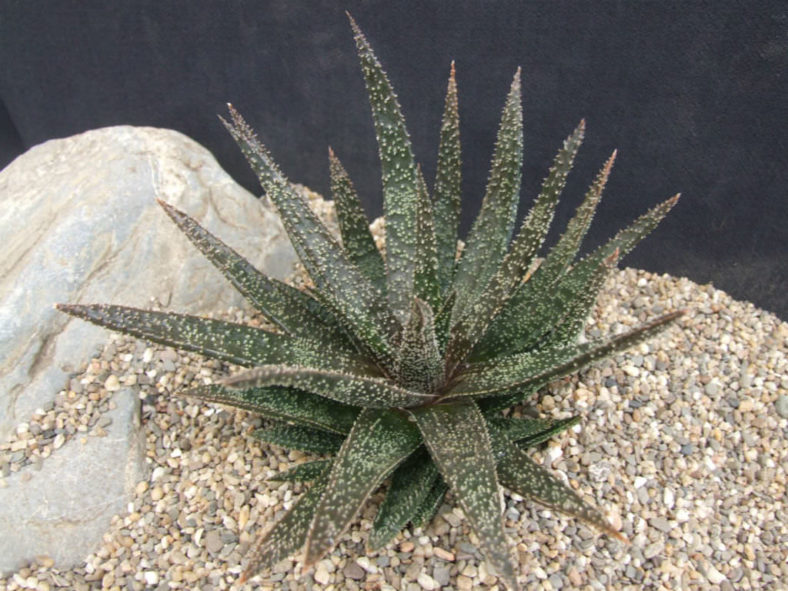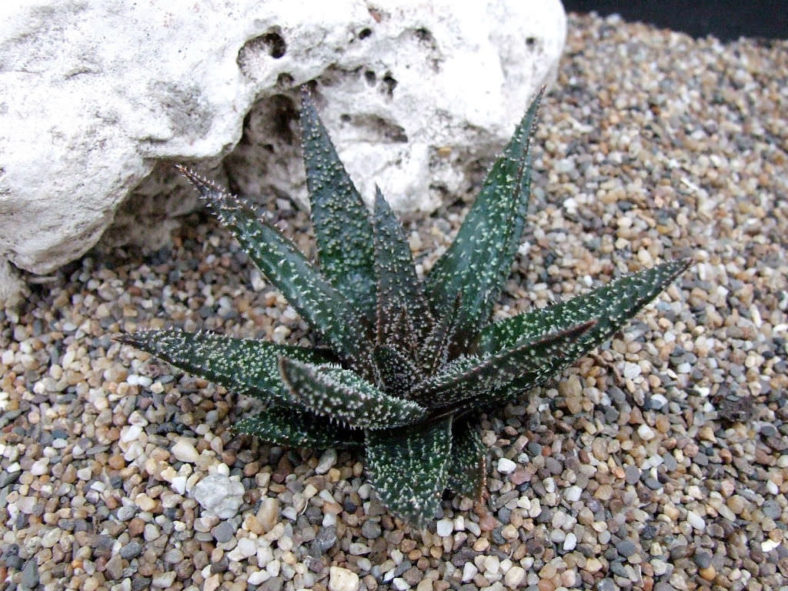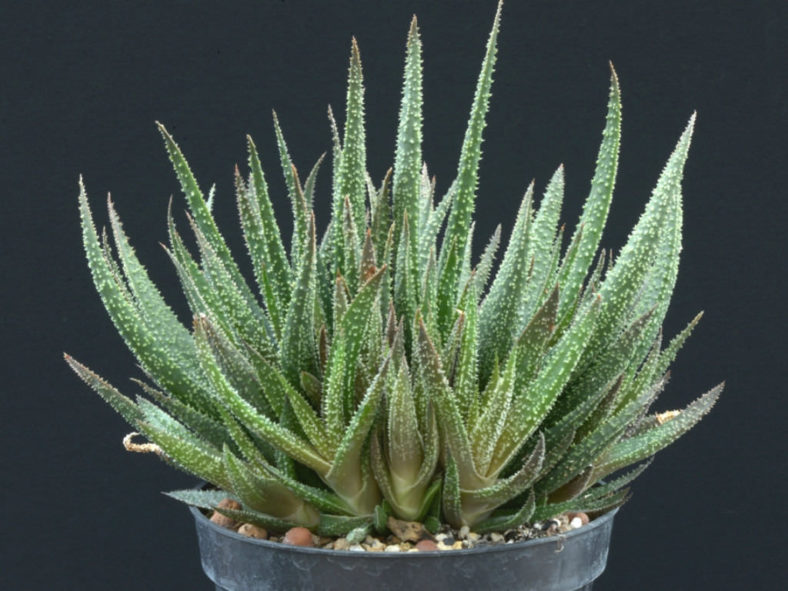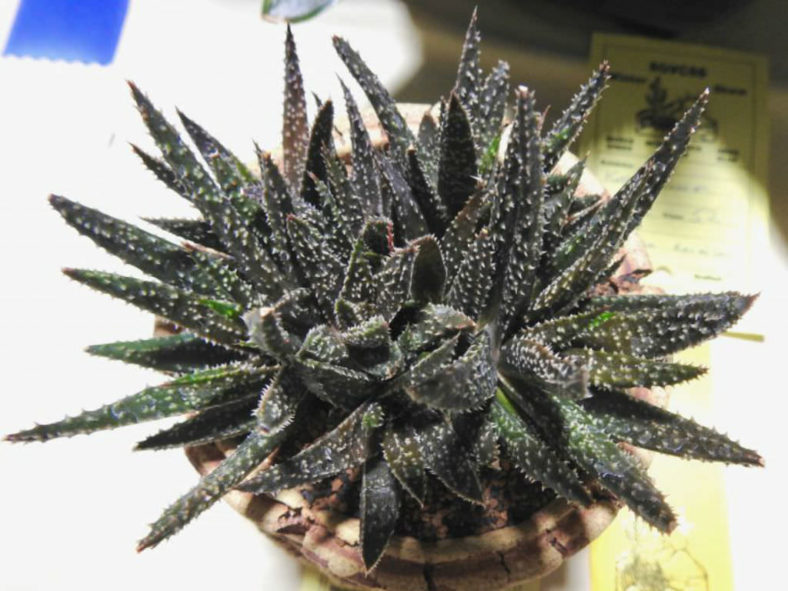Scientific Name
×Gasteraloe 'Twilight Zone'
Synonym(s)
Aloe 'Twilight Zone'
Scientific Classification
Family: Asphodelaceae
Subfamily: Asphodeloideae
Nothogenus: ×Gasteraloe
Description
×Gasteraloe 'Twilight Zone', also known as Aloe 'Twilight Zone', is an attractive small succulent that forms rosettes of dark green leaves with tiny white spots. It is a slow-growing plant that can reach up to 12 inches (30 cm) tall and produces offsets at the base, forming a dense clump with age. The leaves look almost black in direct sun.

Hardiness
USDA hardiness zones 9b to 11b: from 25 °F (−3.9 °C) to 50 °F (+10 °C).
How to Grow and Care
Gasterias are often grouped with Haworthia because the plants have similar cultural requirements. Both are attractive, small succulents that can tolerate somewhat more shade than many succulents, making them more suitable as houseplants. Gasterias are susceptible to fungal infections, which usually appear as black spots on the leaves. These result from too much humidity or water on the leaves, but they should not spread too quickly. Gasterias have a natural defense mechanism against such fungal attacks and attack the invading organism and seal off the wounded spot. Generally, any place where Haworthia and Aloe thrive will be hospitable to a Gasteria.
Gasterias are small, shallow-rooted, and relatively slow-growing. Therefore, they are often grown in small clusters in wide, shallow dishes. Over time, clusters will naturally enlarge as the mother plant sends off small plantlets.
See more at How to Grow and Care for Gasteria.
Origin
×Gasteraloe 'Twilight Zone' is a hybrid that results from a cross between Aloe haworthioides and Gasteria carinata. It was created by Kelly Griffin of Altman Plants. He named it for the intro to Rod Sterling's Twilight Zone with the floating stars coming at you like driving in a snowstorm.
Links
- Back to nothogenus ×Gasteraloe
- Succupedia: Browse succulents by Scientific Name, Common Name, Genus, Family, USDA Hardiness Zone, Origin, or cacti by Genus
Photo Gallery
Click on a photo to see a larger version.



